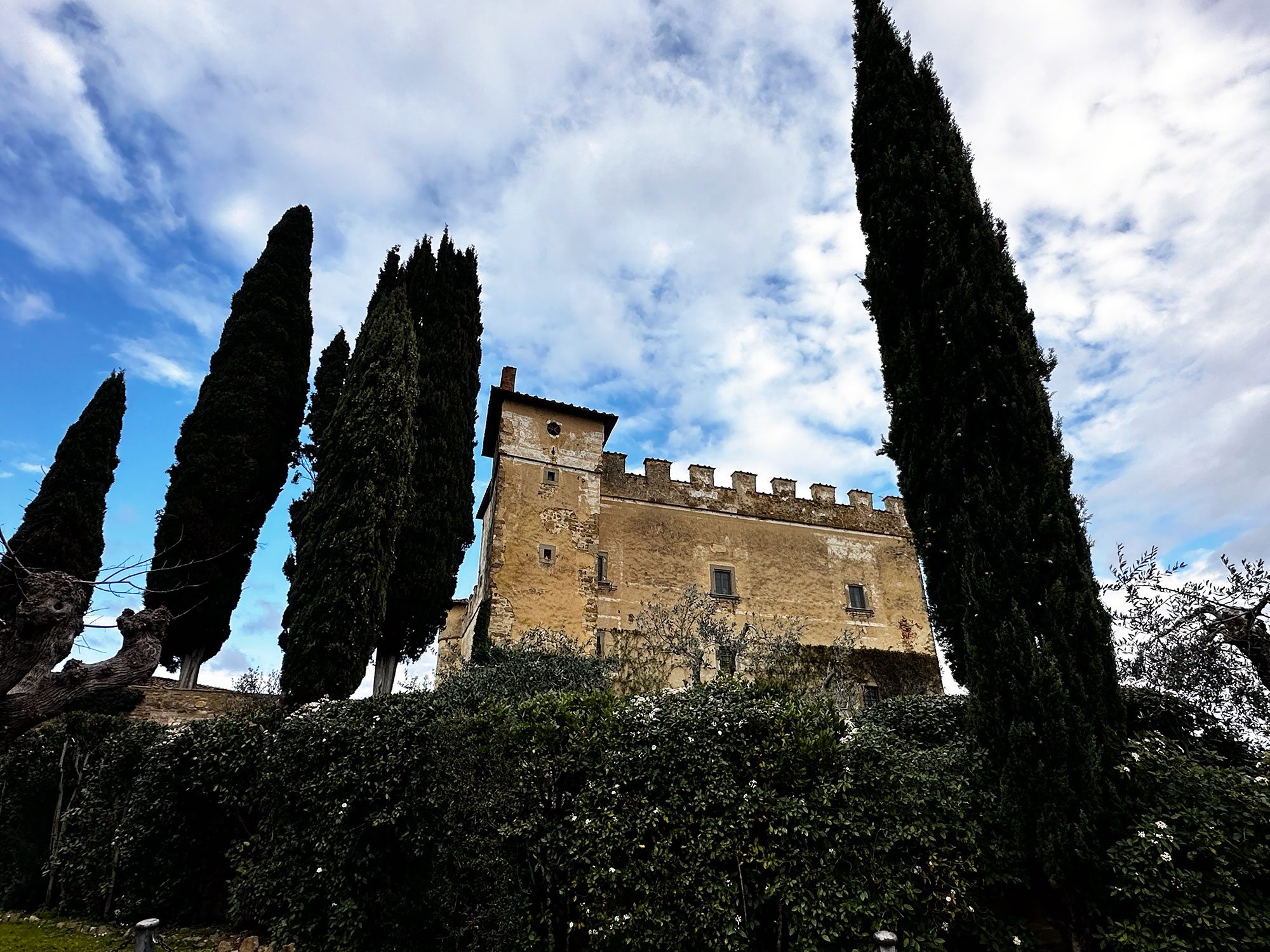
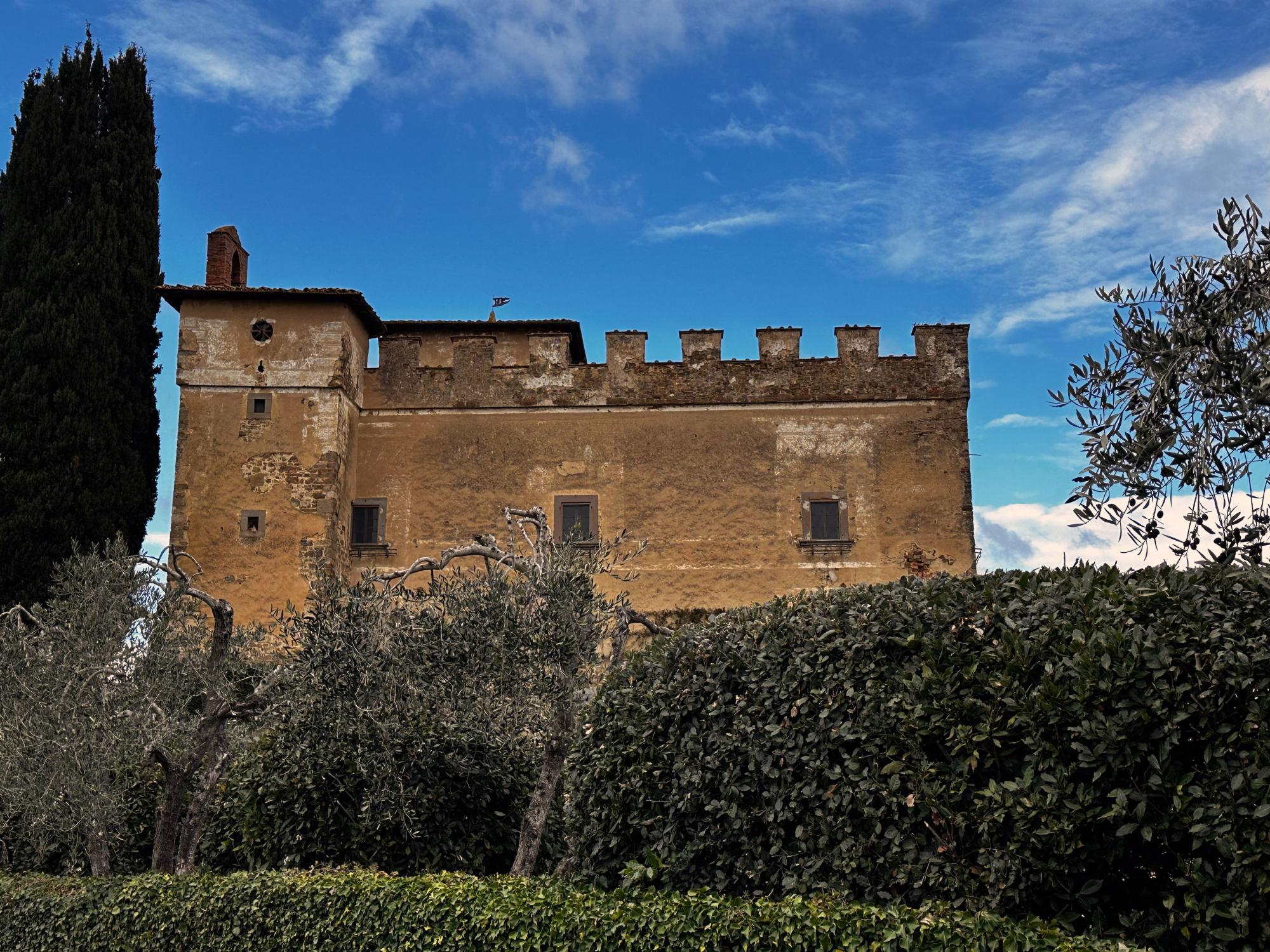
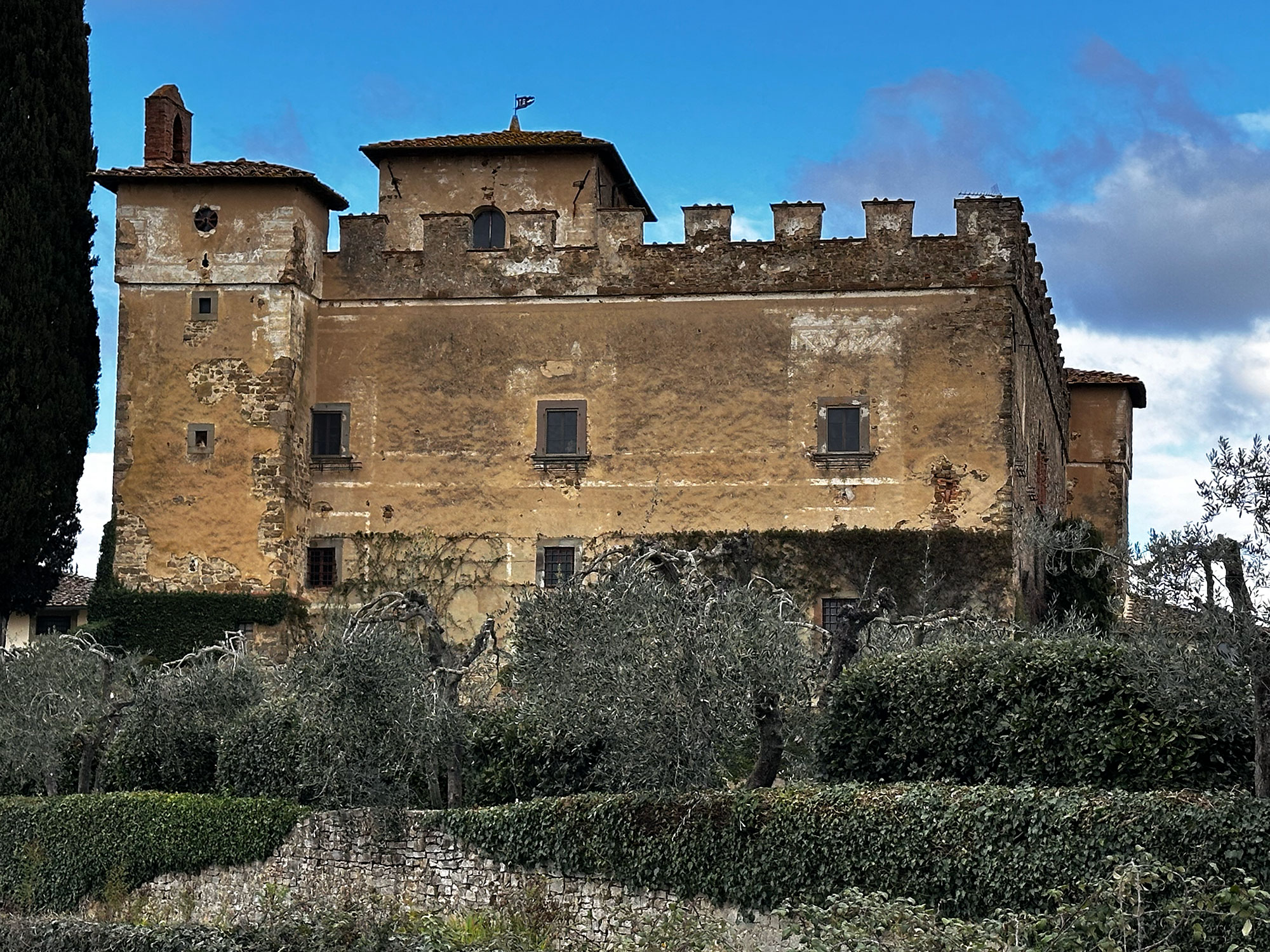
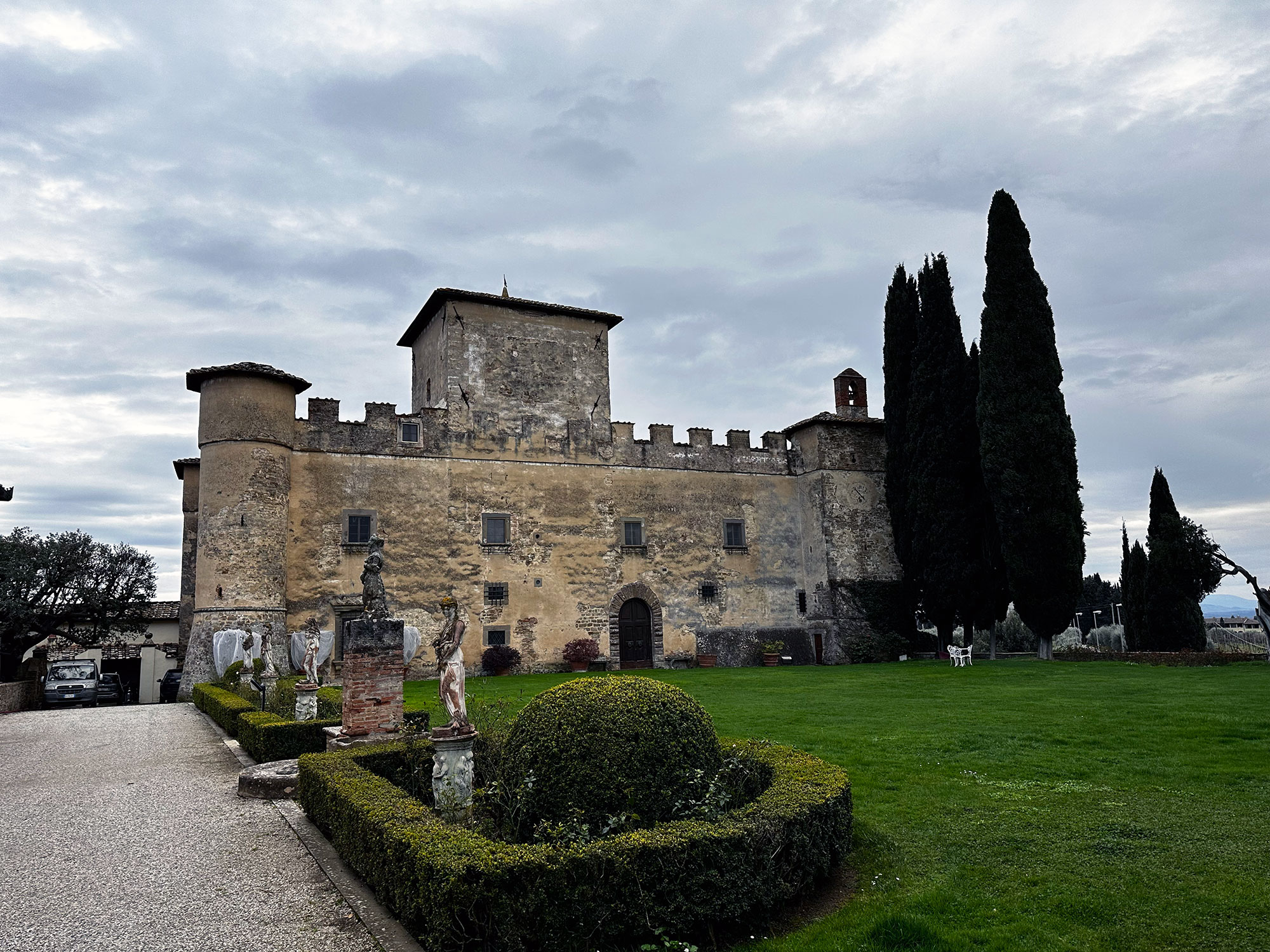
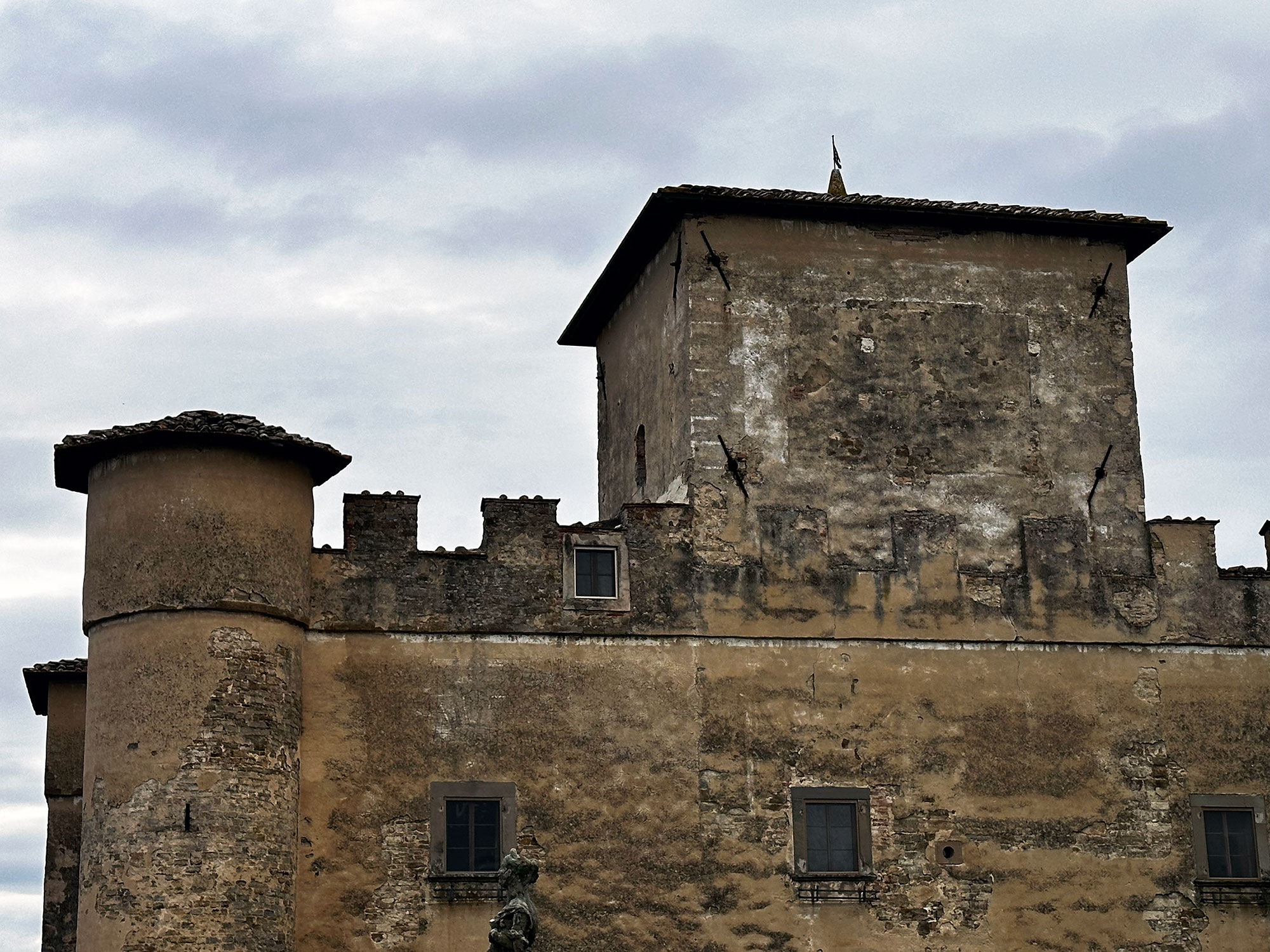
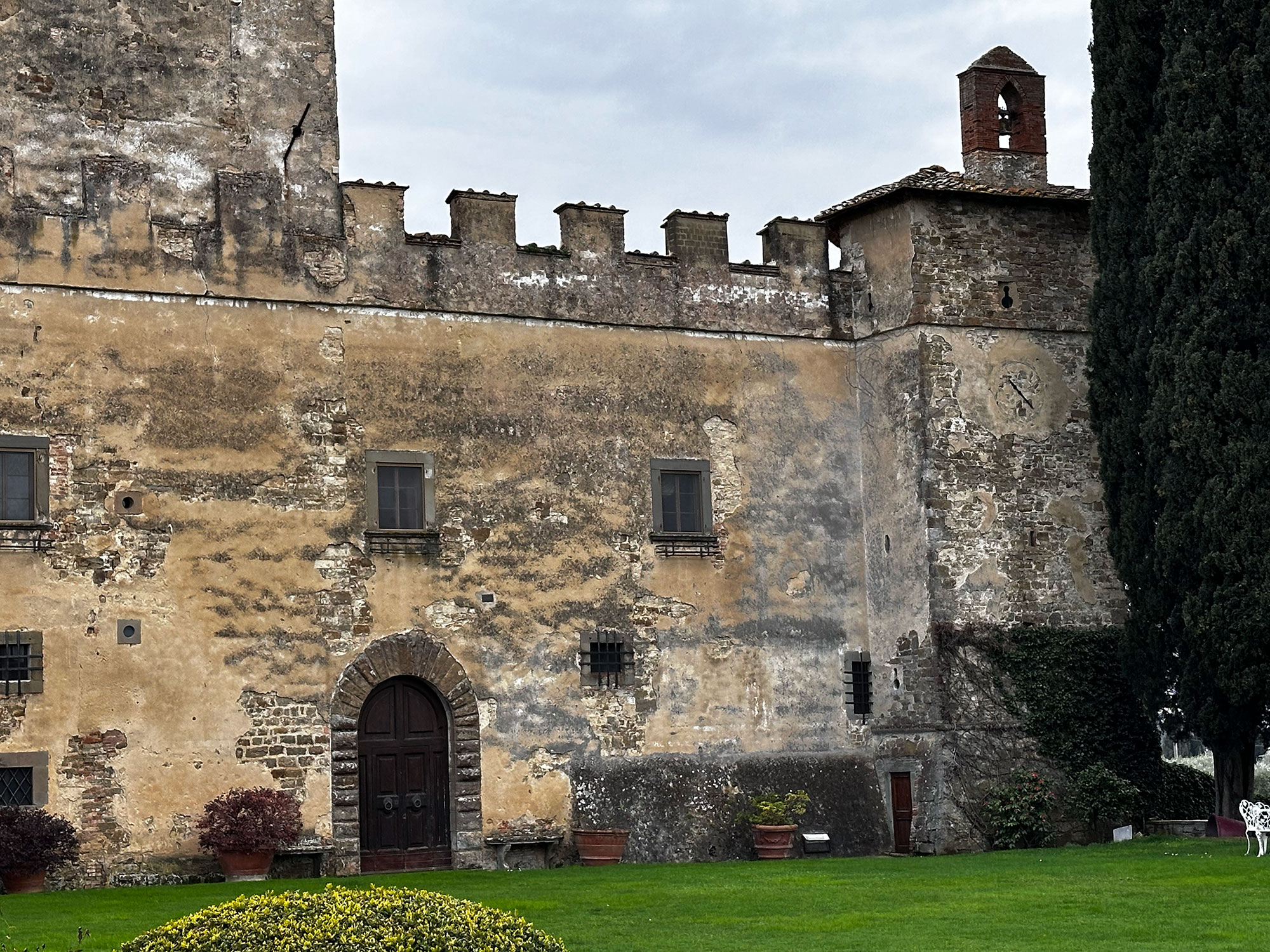
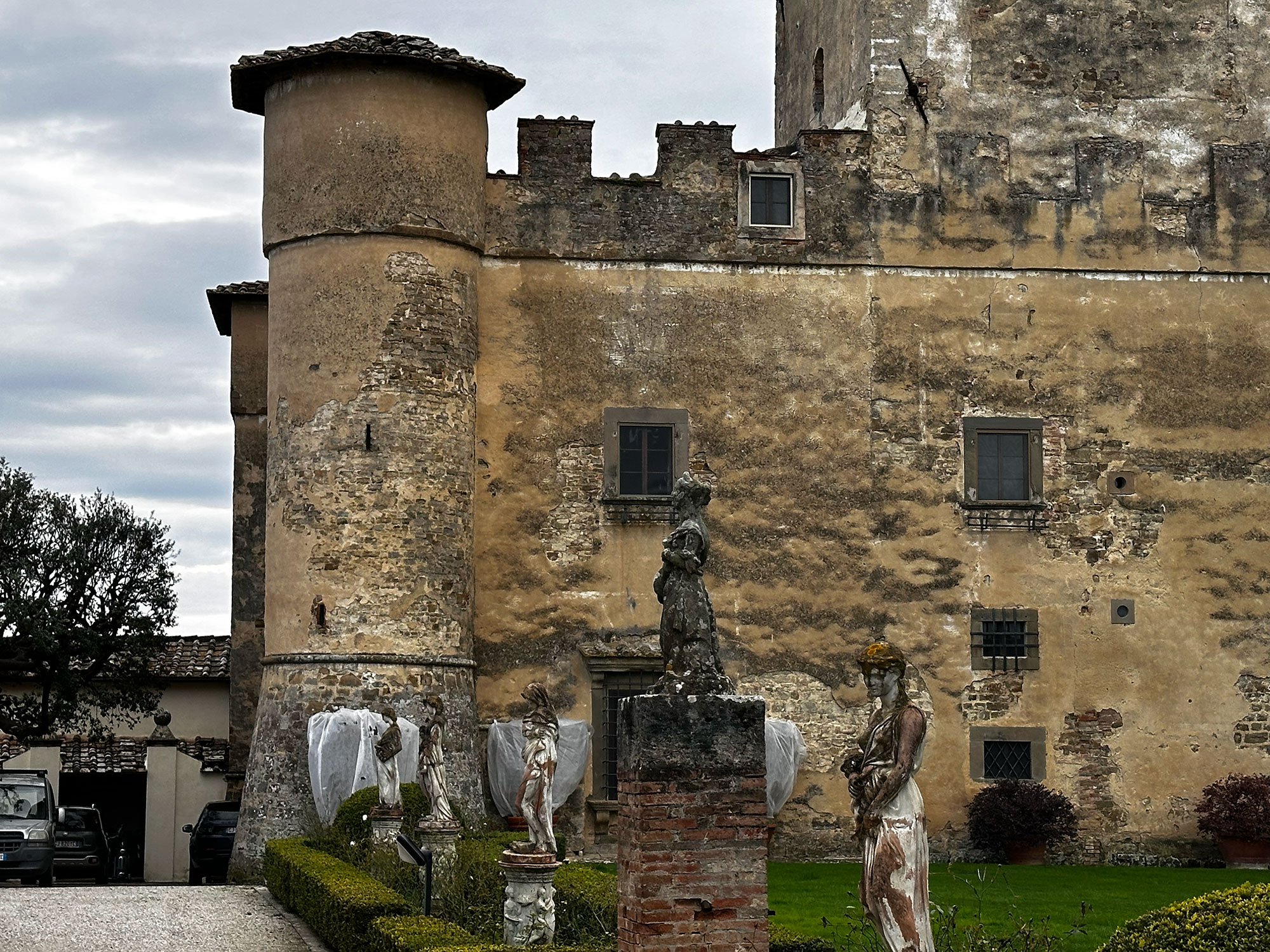







How to reach
The castle of La Paneretta stands in the Monsanto area, renowned for its wines. It is located along a secondary road that crosses the entire valley and can be accessed from the SS222 Chiantigiana, following the signs for Olena, about 3 km past San Donato.
History
On the heights gently sloping towards the Val d’Elsa, stands the villa-farm of La Paneretta, an elegant residence that still retains evident traces of its origins as a 15th-century fortress. The castle was likely built following the abandonment of Cepparello, an older stronghold located further down on the opposite side of the valley, which was destroyed by the Florentines in 1260 during the wars between Florence and Siena.
Originally, La Paneretta appeared as a solid late-medieval stronghold, featuring a classic quadrilateral structure with massive walls, sloped battlements crowned by Guelph merlons, double-rounded cornices, arrow slits, corner towers (one of which houses a chapel), and a central square keep. Its strategic position, close to the border between Florence and Siena, made it a crucial defensive outpost for the Florentine territories.
In 1577, La Paneretta became the property of Ludovico Capponi, through his marriage to Maddalena Vettori, who brought it as part of her dowry. It was he who transformed the fortress into a refined country villa, adding large windows on the façade to bring more light into the interiors, decorating the courtyard with elegant frescoes, and embellishing the main entrance with the distinctive rusticated stonework typical of the time.
When, in 1669, the Capponi family line became extinct, the castle passed through marriage to the Riccardi family, who retained ownership until 1871. Under their tenure, La Paneretta completed its final transformation into a noble villa. Later, the estate became the property of the Strozzi family, who preserved its elegance and prestige.
Today, La Paneretta is home to a renowned agricultural estate, celebrated for producing excellent Chianti Classico, keeping alive the centuries-old tradition of this fascinating site, a witness to centuries of history, wars, and architectural transformations.